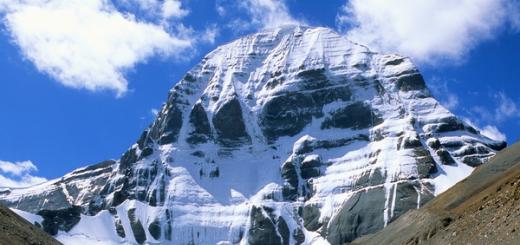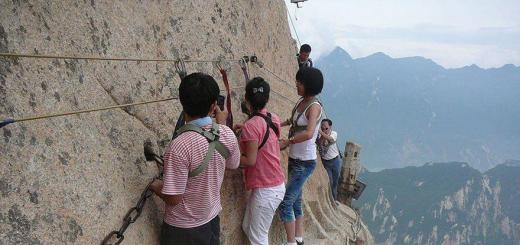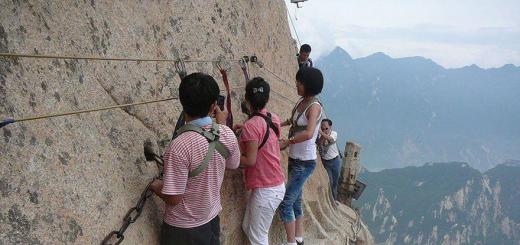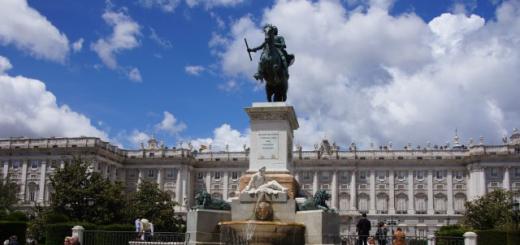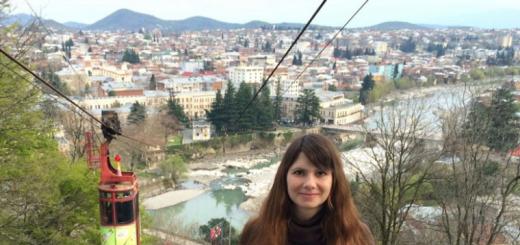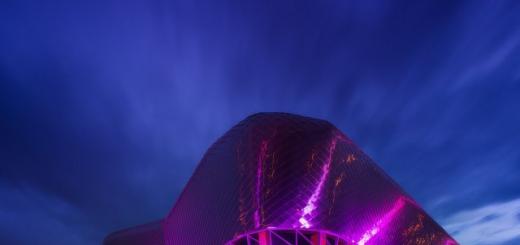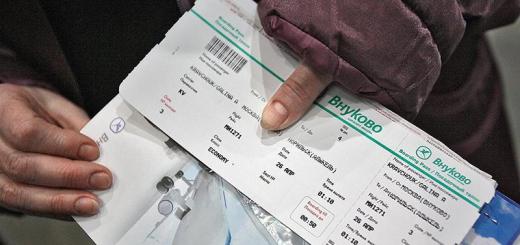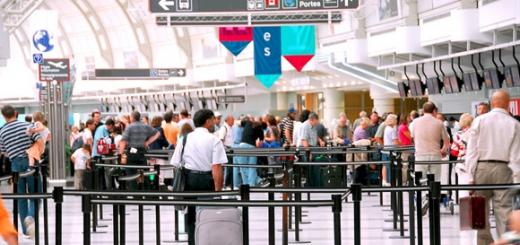Magdeburg from A to Z: Map, hotels, attractions, restaurants, entertainment. Shopping, shops. Photo, videos and reviews about Magdeburg.
- Tours on May around the world
- Burning tours around the world
Even those who do not know what country he is heard about Magdeburg. Magdeburg law - the right of individual cities on autonomy - for rumors from many, but the city is famous not only. In the past, it was a well-known shopping and imperial city, from the past luxury of which the Imperial Cathedral remained, the monastery of the Holy Virgin Mary and other vintage architectural monuments. Modern Magdeburg is a very pretty and green city, here are more than 20 parks, one of which is Herrenkrug - has been preserved from 17 century.
One of the brightest and most popular urban events - the city festival, or the night of the burners of the idol, which takes place in the Easter night, and many tourists come here for the sake of this event.
How to get to Magdeburg
Magdeburg has its own airport that accepts both internal and international flights. Leipzig Airport is also 100 km from the city. Magdeburg has a message with an external world through the A2 and A14 federal highways and railway.
Search flights to Berlin (nearest a / n to Magdeburg)
Shopping: Shops
The main storytelling alleys of the city - Bryter-Vegg (Ernst-Reuter-Allee), as well as shopping passengers on Halberstädter Strase, and in Sudenburg Quarter (Sudenburg).
Guides in Magdeburg.
Popular hotels in Magdeburg
Entertainment and attractions of Magdeburg
On the cliffs of Domfelsen (Domfelsen, "Cathedral cliffs"), founded by Emperor Otto I Cathedral of St. Catherine and Mauritius (Dom St. Katharina und Mauritius) - the oldest building in the city. Together with Kaiserplatz (Kaiserpalz, Imperial Square), the cathedral was once the center of the so-called Third Rome.
Monastery of St. Virgin Frauen (Kloster Unser Lieben Frauen) is one of the main reasons why Magdeburg is called the pearl "Romanesque Architecture Route" (Straße der Romanik). The northern part of the monastery borders with the house of Domplatz, Cathedral Square).
In front of the town hall (Rathaus) on Alter Markt, the Old Market, there is a copy of the famous monument to Magdeburg Rider (Magdeburger Reiter). The original is located in the historical and cultural museum (Kulturhistorischen Museum), which is below.
Museums Magdeburg.
The historical and cultural museum (Kulturhistorisches Museum) stores a collection of objects of art and crafts: 40,000 archaeological finds and medieval values, 10,000 exhibits on the history of the city, more than 11,000 coins and medals, 1400 items on military topics, 800 furniture objects, about 1100 pictures, etc. Mode of operation: Month day, excursions by agreement.
In the Technical Museum (Technikmuseum), exhibits are collected, telling about the economic and social history of the city. Mode of operation: Mon weekend, excursions by agreement.
Magdeburg and its surroundings
Steamer "Württemberg" after his last flight According to the Elbe in 1974, he became anchored by the island of Rotehorn. Now it functions as a museum (Museumsschiff), where you can explore its interior, exhibition on shipping on the Elbe.
The permanent exposition of the art museum (Kunstmuseum) covers works with ancient times to the era of the modern, a German sculpture of the 20th century, as well as modern art.
Tower of Jartausendurm (Jahrtausendturm, a thousand-year tower, 60 m), which is located in Elbauenpark Park (Elbauenpark) - the highest wooden building in Germany. Here in five exhibition halls you can see: Pyramids from Giza, ancient Roman road, a medieval swivel lifting crane, Newton's mirror telescope and optical fiberglass sensors. Dignity of work: from April to October, Mon weekend.
Museum of Art in the Monastery of St. Virgin Mary is the most important exhibition hall of contemporary art in Saxony-Anhalt. The collection contains works: Castellani, Anselmo, Torio, Holzner, Brewero and Cemurra. Mode of operation: Mon weekend, excursions by agreement.
The middle breeding channel binds it to the Rhine and Rur rivers.
It stands on the flat banks of the river, in many places overgrown with trees descending directly to the water with green border. There are generally a lot of greenery - large parks, spacious fields and modest squares between residential buildings.
History
The museum serves stone choppers, made in these places by people of early Paleolithic about 150 thousand years ago. At the end of the bronze and at the beginning of the Iron Age, the terrain inhabited Celts, in 1 thousand to n. e. We changed the Germans who came from North. In the III century. Here saksa seized, creating tribal duchy. Saxon wars 772-804. Ended the subordination of Saksov to the Franksky king Karl Great.
And already in 805, the first written mention of Magdeburg as Magadoburg appears. Then he consisted of two streets and a small number of residential buildings in the old bridge area through Elbe. Interesting to make it the outpost on the border of the Kingdom, in 919. The first king of the East-Franksky kingdom of Heinrich I birds built strong fortifications to protect against the tribes of Slavs and Hungarians.
Magdeburg begins to play an important role in European politics since 929, when the son of Heinrich I - Otton I - married Eddi, the daughter of the English king Eduard senior, and Magdeburg became a bridal gift of the mother of a young daughter-in-law.
In 936, Otton I became King of Germany, and in 962 - the emperor created by him the Sacred Roman Empire, making Magdeburg Imperial Residence.
The economic rise in it began in 965: The Benedictine Monastery of St. Mauritius received the right to keep the market, to check the coin, charge customs fees and taxes. Its influence increased even more, when in 968 he became the center of archbishop.
In 1035, Magdeburg received a patent for the court, merchants rushed here from all over Europe. Crafts developed, the corporations of tailors, batons, shoemakers were formed (there are high-class shoe enterprises today).
Local merchants did not want the most power of the Archbishop. So gradually by 1188, the first urban law is the first in Europe - Magdeburg. The townspeople chose the magistrate, were appointed Burgomistra and the staff of municipal institutions, the rules of trade were determined. Taken for the sample, Magdeburg law spread through Central and Eastern Europe.
In the XIII century. There were 20 thousand inhabitants in the city, he is one of the largest in the empire. From 1295 (and to 1666) consisted in the Hanseatic Union of German cities, was called "Ganza's Bread House", a monopoly selling grain on the middle elbe.
In the first half of the XVI century. He stood on the side of Martin Luther, abandoning Catholicism and won the reputation of the Citadel Protestantism.
The economy seriously undermined the thirty-year war of 1618-1648.: In 1631, the troops of the Catholic League destroyed it almost completely, about 30,000 inhabitants died.
Subsequently, he was deposited by the Army of Napoleon I Bonaparte in 1806, first Prussian, and then Russian troops in 1813
From the XIX century It is one of the average largest German commercial and industrial cities.
During World War II, the Allied Aviation bombardments were exposed: military factories worked in it. The old part was destroyed by 90%.
Since 1990, after the unification of Germany, Magdeburg is the capital of Saxony-Anhalt.
The historic core of the city is old market SquareThe streets rushed from the north, the West and the South. And from the east there is an Elaba embankment. In old days, the streets were the end of the commercial roads, which was led to the fair in Magdeburg, and Elba - a river path, and they remained.
Under the Cathedral of the Cathedral is buried by the dust without which Magdeburg could remain forever a quiet provincial German town.
Historical Center - Old citystretching along the left bank of the elba. In the past, surrounded by fortress walls and towers. Today, ruins are preserved in the area of \u200b\u200bFursthenval and part of the Tower of St. Luki. The early Romanesque Tower, which lies with it, is mentioned in the Magdehurgian chronicles of 1279. Subsequently, it was subsequently destroyed and restored. Today there is a permanent exhibition dedicated to the life and activities of the famous city of Physics Otto von Gerica.
In the north of the Old Town - the main old market square. In 1283, the town hall was built on it. During the thirty-year-old war, destroyed, and restored only in 1945, while retaining the architecture of the XVII century. In the Town Hall Arrangement, vintage bronze gates and a bell tower with 47 bells are distinguished.
Before the town hall in Stone Rotunde is the bronze gilded equestrian statue, presumably, the emperor of Ottone I Great. Citizens nicknamed her Magdeburg rider. This is a copy of the original. The original is in the historical and cultural museum, in the hall of Emperor Ottone.
Not far from the Town Hall - the church of St. John the construction of the beginning of the XII century. It is considered here the oldest temple (the first mention refers to 941), although after the past wars from the early Romanesque building, nothing has been preserved, and now it is a gothic building with numerous restructuring and reconstruction. After restoration of the 1990s. It opened a concert-ceremonial hall.
In the south, the Cathedral Square, the architectural symbol of Magdeburg is minted on it - the Cathedral of Saints Mauritius and Catherine, who is considered one of the earliest Gothic structures of Germany. In 937, the future emperor of the Sacred Roman Empire Otton I founded the monastery of St. Mauritius, and in 950 he began to build a residence and cathedral. They built it for several centuries, the first building burned down, the second was completed at the beginning of the XIV century. And then completed in the XVI century. The architecture of the Cathedral is the only remaining monastery complex - there are both high German gothic and - reflecting periods of its construction - the features of the Ladyomanian and all stages of the development of gothic architecture.
Numerous works of art are collected in the Cathedral, concerts of spiritual music are often arranged. Immediately, in Kripte under the altar, - the burial of the king of Ottone I of the Great, from which the glory began and the wealth of Magdeburg began, and the sarcophagus of his first wife Edith two towers with a height of about 100 m appeared in 1477. The work was completed in 1520. Watering the ornamental cross on the northern tower. The Cathedral hosts concerts of spiritual music, performed including the authority established in 2008.
There are buildings of a rather strange architecture or bizarrely painted. They appeared relatively recently: for example, a green citadel. Probably, the inhabitants are trying to get rid of the sad and faceless architectural heritage of the GDR era: after World War II, the city was built up according to typical projects. There are several very unusual fountains - with devils, goats and birds. And in Magdeburg, there are many statues with naked girls - a visual and sensual reminder of one of the versions of the origin of his name.
In economically, Magdeburg is the Heavy Engineering Center for Germany, the leather and shoe and clothing industry, a large transport node and a river port.
general information
Location
: Northeast Germany.
Administrative location and status
: Administrative center of Earth Saxony-Anhalt.
Administrative division
: 40 districts.
First mention
: 805
Language: German.
Ethnic composition
: Germans.
Religion: Protestantism, Catholicism, Islam, Atheism.
Currency unit
: Euro.
Nearest major airports
: in Berlin and Leipzig.
Numbers
Area: 200.95 km 2.
Population: 235 723 people. (2015).
Population density
: 1173 people / km 2.
SAMI high Point
: 55 m (center).
Cathedral
: Length - 120 m, ceiling height - 32 m, the height of the northern tower is 104 m (southern - 99.25 m).
Climate and weather
Moderate oceanic with continental features.
The average temperature of January
: -0.5 ° C.
The average temperature of July
: + 17.5 ° C.
The average annual amount of precipitation
: about 500 mm.
Mid annual relative humidity
: 65-75%.
Economy
Industry: Electrical engineering, metalworking, precise instrument making, chemical (paintwork), pharmaceutical, light (leather-shoe, sewing), food.
Transport node and river port.
Services sector: Tourist, Transport, Trade.
sights
Historical
Bastion remnants Kleve (XVI century)
Tower of St. Luke (restored in 1632, rebuilt in 1900)
Cult
ENGLISH CATOR SVV. Mauritius and Catherine (1209-1520)
Gothic Walloon Church (laid in 1285, Perestroika 1366)
Capella Maria Magdalene (laid in 1315, restructuring began the beginning of the XVIII century. And after 1945)
Church of St. John (restored after 1945, was restored in the 1990s.)
Architectural
Old Town Hall (reconstruction of the 1960-1970s.)
Millennium Tower ( exhibition halls, 1999)
Star Bridge (2004)
Experimental residential building "Green Citadel" (2005)
Square Old Market, Cathedral and Hasselbach
Cultural
In 1657, an experiment was carried out in Magdeburg, clearly demonstrated the existence of air pressure. Such experience was carried out earlier, but in the history of science remained known as Magdeburg hemispheres. The German physicist Otto von Gerica (1602-1686) dumped the air from the cavity between two folded together with copper hemispheres with a diameter of 35.5 cm. The pressure of the external atmosphere so strongly pressed the hemisphere to each other, which could not break 16 horses, 8 from everyone. Original hemispheres are kept in the German Museum in Munich. Their copies are placed as monuments on pedestals in different areas.
Regarding the interpretation of the meaning of the name Magadoburg in a scientific environment there is no unity of opinion. It is not clear even from what language to translate it. Some offered to use Frankish dialects, and then the name can be understood as a "big (powerful) castle." The version of the translation from the Old Wirnenesetsky is wider, and then it will mean the Girl City: from the "Magacy" (which also means "nymph").
Lost income from taxes and almost all power in the city, the Archbishops opposed Magdeburg law. Conflicts arose. In 1325, for example, the Archbishop of Borgard III was killed. It was over that the clergy retreated, and in 1503. Archbishop Ernst II Saxon moved his residence from Magdeburg in Galle.
The emperor of the Sacred Roman Empire Otton I Great claimed the continuity of the Roman emperors, which was striving to emphasize in any possible way. So, he ordered to deliver a column of ancient times for the Cathedral of Magdeburg and install them in the choir of the Cathedral.
Over the paradise gates - the northern entrance of the cathedral - there is a stone image of the shepherd and dogs. Legend says that in the second half of the XIII century. The construction of the cathedral was stopped due to the lack of funds, but resumed due to the golden put, found by the shepherd Thomas Koppel. In gratitude, his image is placed on the entrance to the cathedral.
Magdeburg Roland - a sandstone figure with a height of 4.8 m. Behind his back, for contrast, a small figure of Tila Ulenspigel is installed - the hero of the medieval Netherlands and German folklore.
City, Germany. Mentioned in 805 as the Magadoburg Fortress, in 937 Magathaburg, Sovr. Magdeburg. The name from other top. it. Magath Girl, Virgo, probably as a pagan cult name (cf. dr. Sax, Ekmagadi Nymphs, elves). ... ... Geographic Encyclopedia
Modern encyclopedia
- (Magdeburg), city in the GDR, the administrative center of the district of the same name. Based at the beginning of the IX century. Rose around two parallel streets and an old bridge area through r. Elbe. The old town is almost completely destroyed by Anglo American Aviation in ... ... Artistic Encyclopedia.
SUT., Number of synonyms: 1 city (2765) Dictionary of Synonyms ASIS. V.N. Trishin. 2013 ... Synonym dictionary
- (Magdeburg, Czech. Devin) main city Prussian prov.Sakonia, one of the most important fortresses of the Empire, on the three Sleeves Elbe.137135 LIAT. Old fortifications are broken, as a result of M. almost doubled. The statue of Ottone led, a monument of war 1870 71 ... ... Encyclopedia Brockhaus and Ephron
Magdeburg - Magdeburg, city in Germany. 275 thousand inhabitants. Transport node; Port on the Elba River. Mechanical engineering, chemical pharmaceutical, leather shoe, sewing industry. Cultural historical Museum. Theaters: National (1796), new urban ... ... Illustrated Encyclopedic Dictionary
I Magdeburg (Magdeburg) District in the GDR, in the southern part of the Middle Eastern Plain, partly in the Harz mountains. Area 11.5 thousand km2. Population of 1.3 million people (1971). Administrative center city Magdeburg. District with highly developed ... ... Big soviet Encyclopedia
- (Magdeburg), city in Germany, port on r. Elba, Earth administrative center Saxony Anhalt. 265 thousand inhabitants (1995). Mechanical engineering (including heavy, electrical), chemical, pharmaceutical, leather shoe, sewing, ... ... encyclopedic Dictionary
- (Magdeburg, Czech. Devin) The main city of Prussian prov. Saxony, one of the most important fortresses of the Empire, on the three Elbe sleeves. 137135 LIAT. Old fortifications are broken, as a result of M. almost doubled. The statue of Ottone led, a monument of war 1870 ... ... Encyclopedic Dictionary F.A. Brockhaus and I.A. Efron
- (Magdeburg) city in GDR, ADM. c. County M. 262.4 t. (1962). Large port on r. Elbe. One of the largest prom. Country centers (heavy engineering, etc.). First mentioned in 805. With the 968 center of the Archbishopianism, one of the most important supports ... ... Soviet historical encyclopedia
Books
- Recent years of Kiev's self-government in Magdeburg law, I.M. Kamanan. Magdeburg law is one of the most famous urban law systems that have developed in the XIII century in the city of Magdeburg as a feudal urban law, according to which economic ...
- Riddles of Golden Conview, Shigin Vladimir Vilenovich. The book of the writer and journalist, the captain of the 1st rank of Vladimir Shinigin is devoted to the investigation into the circumstances of the death of ships transporting at different times a large bunch of goods. The reader will meet ...
Magdeburg, Germany - one of the most green cities of the country. Unfortunately, only a few really valuable historical attractions have been preserved, which there were a lot here very much. Today Magdeburg is known as the city of parks and futuristic buildings.
General
Magdeburg is a city in the central part of Germany, the capital of Saxonya land. It covers the area in 201 sq. M. m. Population - 238 thousand people. Stands on the Elba River. Magdeburg is divided into 40 urban areas.
The first information about the city as about a shopping place is dated 805 year. The flowering of the city occurred after the construction of the Benedictine Monastery in 937.

In world history, Magdeburg is known as a place in which one of the most famous urban law systems has developed in the 13th century - Magdeburg law. Princes and kings who gave this right of a number of cities, gave them the right to self-government, and therefore for freedom. Magdeburg law has been particularly popular on the territory of the Grand Principality of Lithuania.
Today Magdeburg is very different from Magdeburg 1800 or 1900. Unlike other German cities, he failed to preserve all his rich historical heritage, and known, for the most part, large green parks and modern business centers.
sights
Despite the rich and interesting story, in the city has not survived large number Ancient buildings - most were destroyed during World War II.
GREEN CITADELLE (Gruene Zitadelle)


Green Citadel is the main architectural symbol of the city of Magdeburg in Germany. The building was erected in 2005 on the project of the Austrian artist Freidenshraich Hundertwasser (it is very popular in Western Europe). Citadel is close to Cathedral Square In the heart of the city of Magdeburg. It is impossible to pass by this structure - against the background of the red and concrete buildings, the bright pink construction in the gray strip is strongly allocated.
On the first floor of the citadel there are several cafes and restaurants, there is a store. On the second and third floors there is a hotel (42 rooms), a small theater, kindergarten and several offices. The top floors are fitted under apartments (55).

All internal premises are also interesting and, in places, bizarre. For example, in all apartments (they, by the way, have a round shape) you can see the "Dry" pillars, a bright mosaic on the walls and unusual "painted" baths. The interiors of the cafe and restaurant will also surprise: the painted walls in the toilet are combined with oriental carpets and huge crystal chandeliers.
In the courtyard you can see no less bizarre designs: curved pillars that support the citadel, a mosaic fountain and stone tracks, which would seem to flow from the top of the building. On four turres, which are on top of the complex, trees and flowers (from here and the name of the building) are growing.
Interestingly, the Magdeburg authorities are not going to paint more or repair this house. According to the artist's plan, he should naturally become old, and, gradually, from a bright and modern building, turn into more "exquisite" and "weathered".
Location: Breiter Weg 10a, 39104 Magdeburg, Land Saxony-Anhalt, Germany.
Elbaudpark and Millennium Tower (ElbauenPark)
Elbaunepark (140 hectares) is the main place of rest, both at the locals and guests of the city. Located in the north-east of the city, not far from the River Elba.

Interestingly, 20 years ago there was a big dump in this place, but local residents, on the eve of the federal exhibition in Magdeburg, decided to improve appearance Cities, creating a large park at this place, in which there are:

It is worth saying that it is thanks to futuristic sculptures and the Millennium Tower Park looks very modern and unusual. This is especially true of the daytime: The construction of the building is brightly highlighted by LED lanterns and decorate the city.
As for the infrastructure, there is a bistro, 2 cafes and beer garden on the territory of the park. A number of modern hotels that are greatly popular with a few miles of Elbaudpark.
- Location: Tessenowstr. 5A, 39114 Magdeburg, Land Saxony-Anhalt, Germany.
- Opening hours (Elbauenpark): 10.00 - 18.00.
- Millennium Tower Work time: 10.00 - 18.00 (in winter it does not work).
- Cost: 3 euros.
Magdeburg Dom (Magdeburger DOM)

Magdeburgsky Cathedral - The oldest Gothic Cathedral of Germany, erected in the 13th century. Like all the temples built at the time, it is distinguished by the fitted arches, large window stained glass windows and the walls of the ivory. Interestingly, there are also many ancient columns and "heavy" sculptures (this is a big rare for European architecture of the 13-14th century).
Many tourists note that, in their opinion, in the cathedral you can see some of the most beautiful frescoes in Germany. The main value of the temple is the sculptures of the first emperor of the Sacred Roman Empire Otto the Great (he is buried right there) and his spouses.
- Where to find: Am Dom 1, 39104 Magdeburg, Germany.
- Opening hours: 10.00 - 18.00.
Monastery of Our Lady (Kloster Unser Lieben Frauen)


Monastery of Our Lady - one of the largest and oldest representatives of the Romanesque architecture of Magdeburg. Located in the very center of the city. The monastery (he belonged to the apronstrats) was erected in 1017, and from 1976 there is a museum.
In the former monastery you can see:
- collection of shallow plastics (exposure base);
- ancient sculptures;
- relics of various German temples;
- monastery library (about 3,000 scientific and artistic books).
Also near the museum open park sculptures.
- Address: REGIERUNGSSTR. 4-6, 39104 Magdeburg.
- Open: 10.00 - 18.00
- Cost: 4 euros.
Old Magdeburg Market (Alter Markt Magdeburg)
The old market is the city district, located in the heart of Magdeburg. Here are the main historical sights:


- Town Hall. After taking the Magdeurian law to the city, the town hall was erected here, which, after frequent fires and wars, had to be renewed in the 1960s.
- Monument to the Magdeburg rider. It is considered the first separate sculpture, which was established in Germany.
- The Ulenenspigel Fountain is dedicated to the old storyteller, once who lived in Magdeburg.
- Monument Otto von Gerica. This man was not only a burgomistrome of Magdeburg, but also outstanding scientists (he invented Vacuum).
- Britestrasse is an old German street, on which today you can see a number of baroque houses.
Church of St. John (Johanniskirche Magdeburg)


The Church of St. John is an important historical landmark of Magdeburg in Germany, built in Romanesque style. In the period of the Middle Ages, the temple survived 2 fires, so during history, he repeatedly changed his appearance. Today, the Church of St. Johann is no longer used in direct appointment.
At the landmark you can get, buying a ticket for an organ concert or exhibition. They pass regularly, 2-3 times a week.
Location: Germany, Sachsen-Anhalt, Magdeburg, Neustadter Strase, 4.
Where to stop
In Magdeburg in Germany, there is a little less than 60 hotels and hotels, so the accommodation must be booked at least a month before the date of arrival.
The average price per room for two in high season at the 3 * hotel varies from 60 to 80 euros per day. This cost includes free Wi-Fi, parking, breakfast (European or continental) and all necessary appliances in the room.


The cost of apartments for two in the high season in Magdeburg (not far from the attractions) will cost 40-50 euros per day. This price also includes household appliances, kitchenware and essential things.
Magdeburg is a fairly large city, so to book a hotel or apartments is better in the center - and to the sights of Magdeburg closer, and there will be no problems in order to get from the station to rented housing.
Find out prices or book any accommodation with this form.
Transport connection
If you look at the location of the city of Magdeburg on the map of Germany, it will be obvious that it is located in a very profitable and in a convenient place. Nearest large cities Magdeburg are: Brownschweig (89 km), Hannover (131 km), Berlin (128 km), Galle (86 km).


Large airports close to Magdeburg are in:
- Kohstedte (CSO) - Kohstedt, Germany (47 km);
- Braunschweig (BWE) - Braunschweig, Germany (93 km).
Get to Berlin, which with Magdeburg is separated less than 130 km, will not be difficult. You can do it on:



- The longest water bridge in Europe is in Magdeburg. It crosses the Elba River, and its length is just over 918 m.
- The first emperor of the Sacred Roman Empire, Otto I, is buried in the Gothic Magdeburg Cathedral.
- Magdeburg first in the world received the right to self-government (Magdeburg law). It happened in the 13th century.
- The first Gothic Temple of Germany, Magdeburg Cathedral, was erected in Magdeburg.
- Magdeburg ranks second in the list of the country's most green cities.
Magdeburg, Germany - a modern German city, which is very different from the usual small and cozy medieval towns of the central part of the country. It is worth going here to those who are not chasing historical sights, but loves futuristic buildings and nature.
Magdeburg Hemispheres and others interesting Facts About the city:
Related records:

Few today will be able to deny that Magdeburg is a city of contrasts and an incredible attractive force. The history of the empire and the period of socialist transformations merged here.
In the appearance of the city, traces of the Second World War and typical handwriting of socialist architecture will forever remain forever - wide boulevards and precast reinforced concrete residential buildings, the so-called plattenbuthene. However, this is one of oldest cities Germany, based almost 1200 years ago and being the birthplace of the first Gothic cathedral in German land.
The main historical attraction of Magdeburg. Anyone who will see this miracle of architecture will be amazed by the grandeur of his two sticker towers. This architectural monument It is rooted in 937, when the King Otto I founded the Benedictine monastery on this earth. After a fire that destroyed the original cathedral, only after a couple of centuries, it was rebuilt as a gothic three-level basil with a testing, chorus and pointed windows.
In total, 300 years had to ensure that the Magdeburg Cathedral will acquire that appearance, which today see residents and guests of the city. This is the burial place of Otto I and his English wife Edita. The Great and Artistic Value of the Cathedral, here you can find many works of art ranging from the graceful sculptures of Magdeburg virgins of the 13th century and ending with the Anti-war memorial of Ernst Barlach.
Location: Am Dom - 1.

Harmoniously spread among the meadows, lies on the eastern shore of Elba Elbaouenpack - green paradise. Former military-industrial area was transformed into a unique, blooming nature Park. He appeared to the 25th anniversary federal Garden Show in 1999. Today, this unique "cultural landscape", which is one of the most important attractions of Magdeburg.
Elbaouenpack filled with blooming roses, places for sports and recreation, on its territory there is a house of butterflies, a lot of sculptural compositions and art objects. And the "highlight" of the park is considered Millennaya TowerHeight 60 meters. This is a museum in which there is everything: from a wooden wedge to the X-ray apparatus, from cave painting to computed tomography - everything that humanity has reached technical plan for the last 6000 years. A total of 250 exhibits at five exhibition levels.
Location: Tessenowstraße - 7.

The first documentary mention of Vellenchurma, the part of today's Lukasclus refers to 1279. The tower was part of the medieval fortress.
During the thirty-year war, it was partially destroyed. Being a well-known engineer and inventor Saxon Otto, von Gerica began the reconstruction of all fortifications and bridges, as well as bastion. Labor was titanic, but the game cost the candle. Tower of St. Lucas is impressive with its sizes: the total height is 21.70 metersand diameter - 11.42 meters. On the first floor, the brickwork has a thickness of 1.42 m.
Location: Schleinufer - 1.

The most old building in the city in the city of Magdeburg, as well as a modern center of art, which collected masterpieces of painting and sculptures. The architecture here will uniquely reflect the changing history of the city, marked with flourishing, destruction and reconstruction. This is not just a museum of past epoch, but art as a living, time-dependent system.
Interesting detail: The entrance door to the monastery is designed by a popular local artist by Heinrich the athelet and it is very fun. It is necessary to knock for a female bas-relief necklace at the entrance, and to enter the man's hat to put on the hat. Entrance to the monastery is free.
Location: Regierungsstraße - 4.

The old Magdeburg market is in the historic part of the city. The first references to him go back to 1176. Unfortunately, the building, which was rebuilt several times, was almost completely destroyed during bombing. However, the central part of the market - the Town Hall, was restored in his historical appearance. The figure of the famous Magdeburg rider towes Square.

The sculptural composition depicts the ruler on the horse accompanied by two female figures. There is a copy of the square, the original is in the cultural history museum.
The statue itself was probably created in the middle of the XIII century. According to architects, the look and gesture of the rider facing medieval town hall. The rider is considered a symbol of privileges and freedoms provided by Otto first.

The museum collections are divided into archeology departments, Middle Ages, city history. The exposition presents coins and medals, furniture, paintings, graphics, crafts, textiles and even there is a separate section dedicated to school history. In the museum stores, more than 800 paintings dating from 16-20th centuries. The museum also has a library.

The famous place in Magdeburg that is located south of the city center. IN last years Square turned into a center nightlife. This part of the city was one of the few Magdeburg Islands, which survived the Great bombardment. Today, the area and its surroundings are completely renovated. It is flooded with dozens of pubs, bars, restaurants and discos.

The newest architectural landmark of Magdeburg is considered the Green Citadel, the building that erected in the city of Eccentric artist and the architect from Vienna Freedsraich Hundertwasser. The project was completed in 2005. It is a pink, like a piglet building, with trees that grow straight on its facades, and green glades cover its roof.
The house reflects the Philosophy of Hundertwasser - the creation of unique spaces in harmony with nature, peculiar "oasis for humanity". Inside there are offices, apartments and shops, as well as a small hotel and cafe. In order to understand the intriguing vision of the architect, for tourists even spend watch tours of the green citadel.
Location: Breiter Weg - 10a.

Rothorn is one of the most beautiful English landscaped parks in Germany and the green heart of Magdeburg. Boat walks, dinner on the terrace of the river restaurant, sports at the courts - make this place the center of attraction and for citizens, and for tourists. The architectural attraction of the park is the Town Hall, decorated in the style of Bauhauses. The building was built on the occasion of the world famous German theater exhibition in 1927.
Magdeburg has that offered from the point of view of tourism and leisure: numerous sports and entertainment events, lively city parks and cultural attractions. You can walk around the city on foot, turn on a two-story bus or on a boat to explore the city. Magdeburg is good at any time of the year with his Christmas fairs, beer bars, crucified Eluba, where everyone ride on bicycles, gardens and parks. It can be explored infinitely, discovering the history of the country, getting acquainted with her art, surprised how old and new born is unique.

